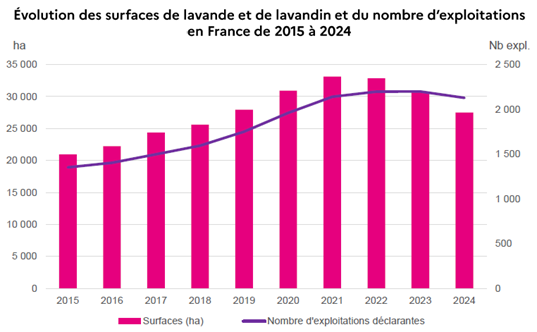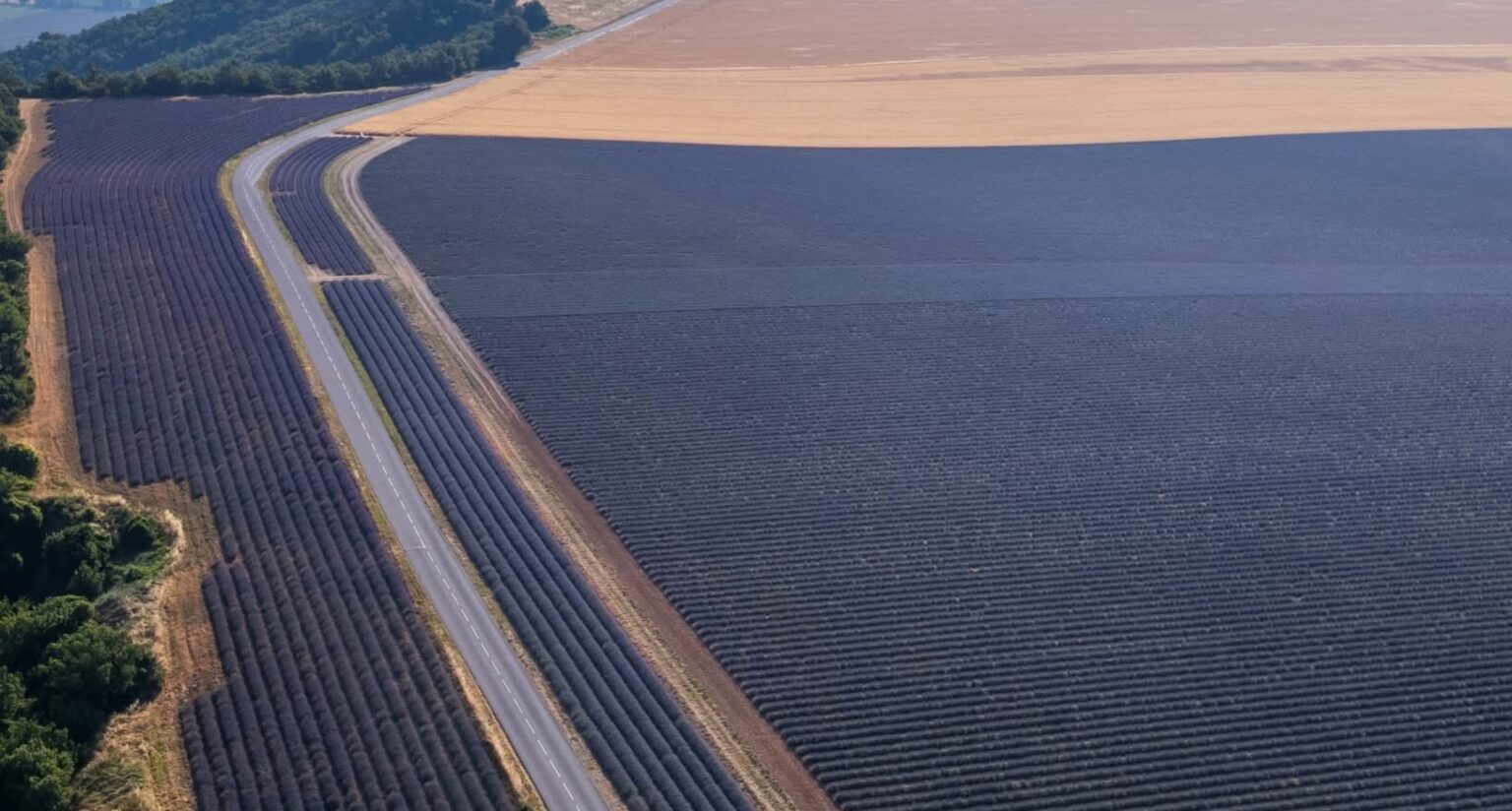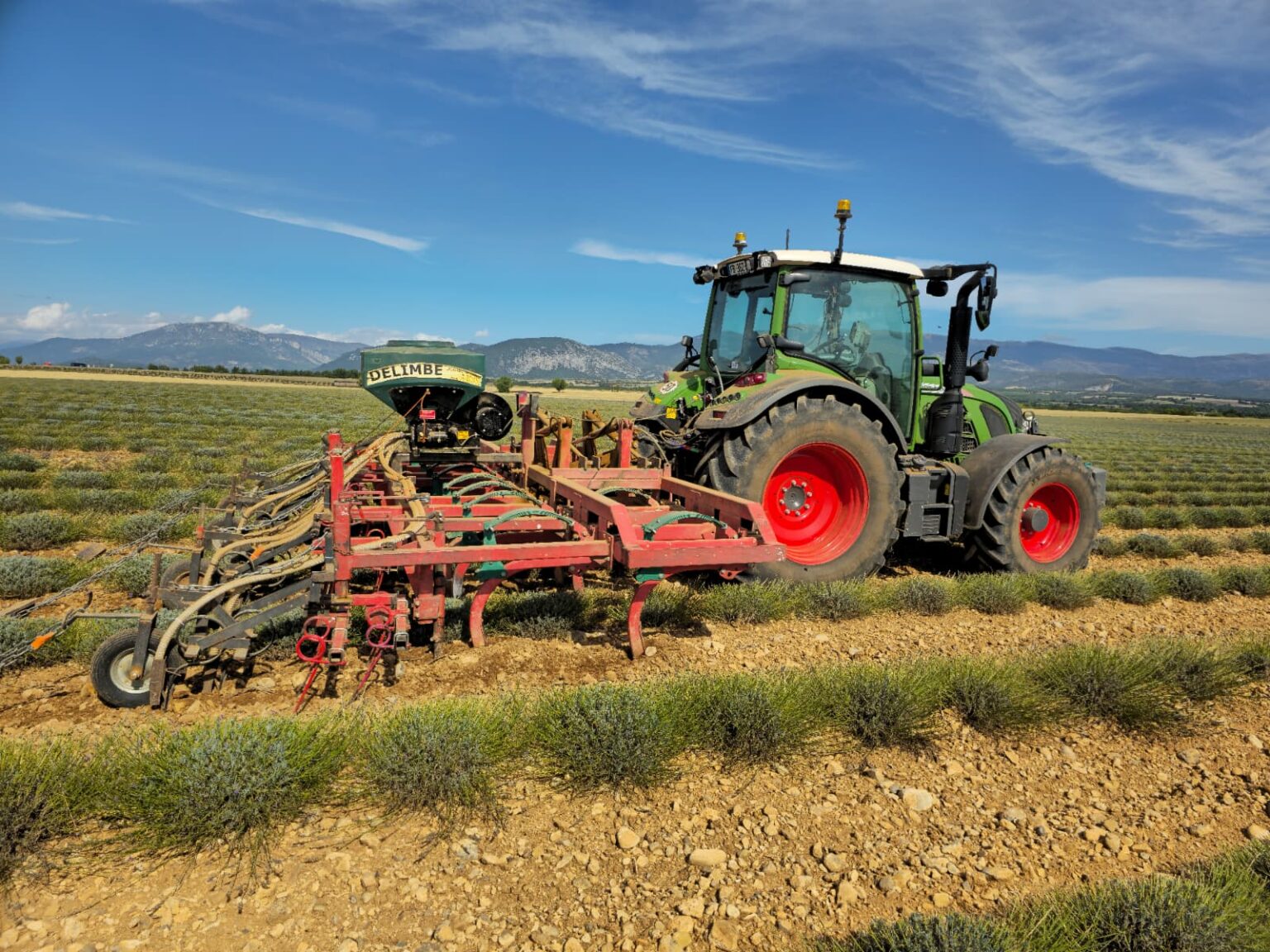A general decline in yields confirmed
The 2025 harvest turned out to be quite atypical. It began about ten days earlier than usual, around June 20 on the Valensole Plateau, and was also shorter than in previous years. The yield declines announced at the end of July have been confirmed: around -20% for Lavandin and -15% for Lavender, reaching up to -50% for Fine Lavender on some farms. Despite promising spring rainfall, the intense heat of May and June depleted the soil’s available water reserves, disrupted flowering, and encouraged pest development — particularly cutworms and leafhoppers — with an even stronger presence on the Albion Plateau. The July storms, though too late, sometimes caused damage while nonetheless allowing for some vegetative regrowth after harvest. This decline in yields adds to a continued reduction in cultivated areas, a direct consequence of four years of market strain: selling prices below production costs, leading to the gradual depletion of stocks accumulated during periods of overproduction. Today, Lavandin acreage has fallen below 20,000 hectares — lower than in 2019 — while Lavender covers around 7,000 hectares.

Source: FranceAgriMer based on CAP data
A concerning plant health status and evolving standards
The economic context of recent years has led producers to significantly limit the renewal of plantations due to large market stocks and very low prices. As a result, the certified healthy plant sector has seen a sharp decline over the past four years, with the number of plants divided by seven. Existing lavender fields are therefore ageing and less resistant to diseases and climatic stresses. Paradoxically, young Lavender plantations are also highly vulnerable to pest attacks, particularly from the leafhopper — the vector of the Stolbur phytoplasma, which now accounts for over 50% of observed cases of plant decline. Weed management has also become a growing challenge with the reduction of available herbicidal substances. The stress endured by the plants affects the chemical composition of the essential oil, along with other factors such as the age of the plot, the harvest stage and method, and the presence of weeds. This makes compliance with existing standards more complex — standards that will need to evolve to remain adapted to the current context.

Lavandin harvest 2025 | Photo credit: Vincent Ghesquière
The importance of sustainable practices to support the sector
Autumn is a time dedicated to soil preparation — a key step for the plant’s future growth. The months of September and October were therefore marked by hoeing, the addition of trace elements, compost spreading, ploughing, and integrated farming practices, notably the sowing of cover crops between rows. These cover crops help to aerate the soil, reduce erosion, retain water, store carbon and nutrients, and return organic matter once mulched. These operations take place before winter sowing and planting, and such practices are essential to help the plant withstand climatic and sanitary challenges. But sustainability goes beyond the field: it must also guide commercial practices, through purchasing and sales decisions that reflect the sector’s current realities. Major buyers have recognised this by agreeing to adjust their purchasing prices accordingly. Supporting French lavender also means ensuring fair prices for those who, every day, work to keep the little blue flower alive — inspiring and sustaining an entire industry.

Sowing of cover crops between rows


